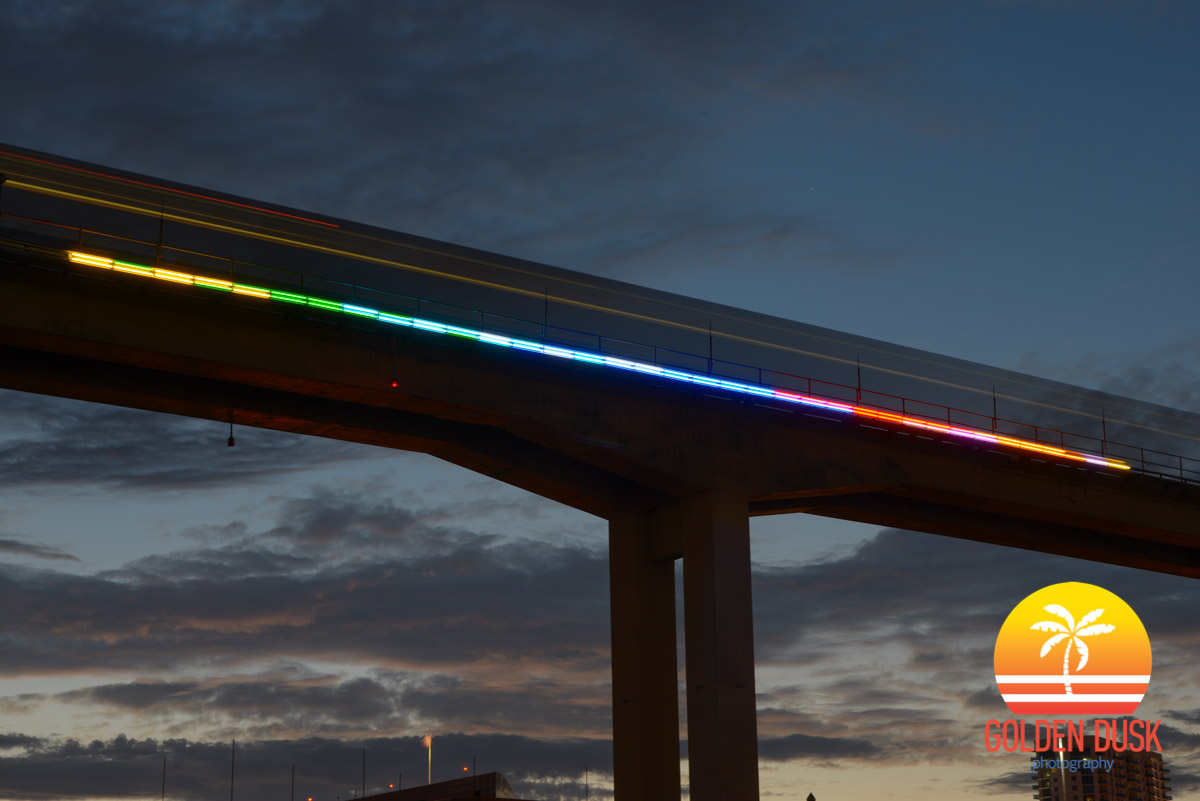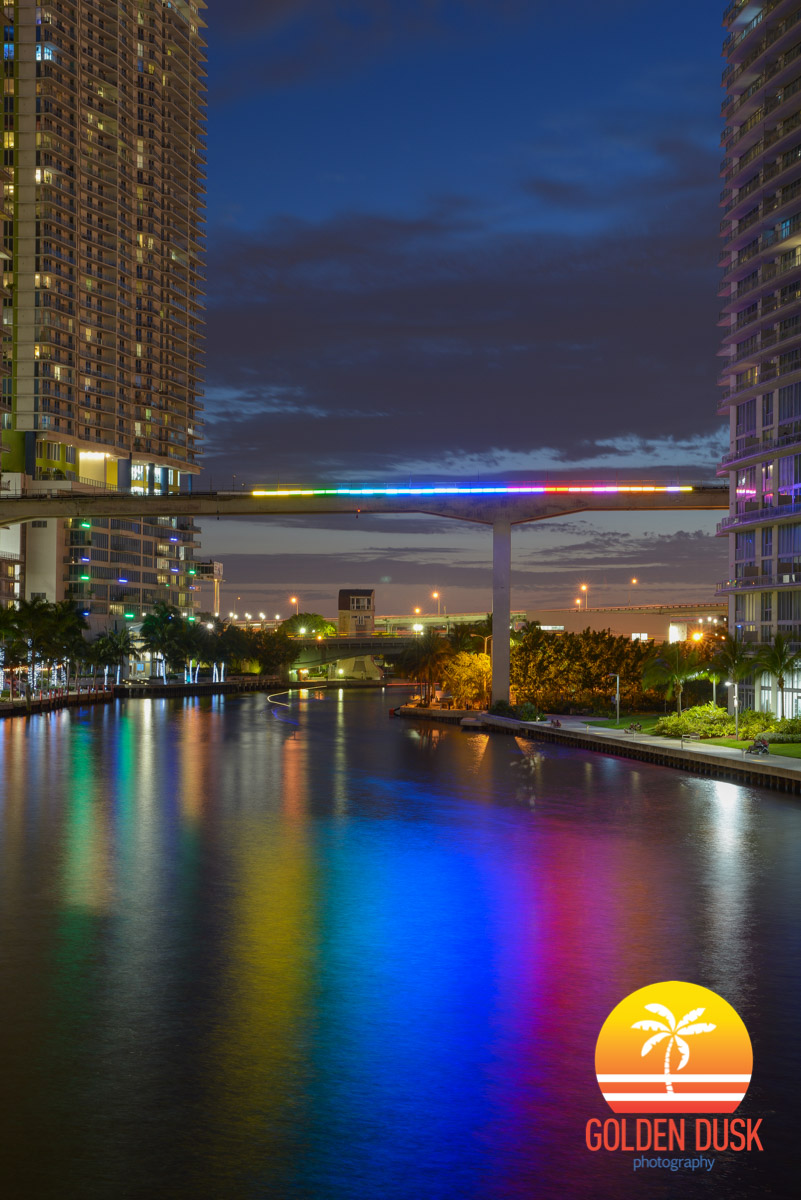Rockne Krebs - The Miami Line
As part of the Miami-Dade Art in Public Places Program, artist Rockne Krebs was commissioned to create "The Miami Line" in 1984. The colored bulbs extended 1,540 feet on the Metrorail tracks that created a colorful glow over the Miami River.
Over the years the bulbs went out or were damaged. Eventually the lights burned out for good in 2012.
The City of Miami art in public spaces has restored the iconic Rockne Krebs' "The Miami Line" lighting exhibit along the Metrorail bridge that illuminates the river at night. Troy Taylor (VP, The Riverfront Master Association and Board President, The Mint Condo Association) joined with Brett Bibeau of the Miami River Commission 3 years ago, and Taylor states, "with the growing demand for luxury condos and trendy restaurants, along the Miami River I vowed 3 years ago that I could not let the lights go out on this Iconic landmark."
Although "The Miami Line" is partially re-lit an stops about halfway over the Miami River, only partial funding has been has been given so far, which includes 52 LED lights at a cost of $822,500, according to The Miami New Times.
Funds still need to be raised and budgeted to extend "The Miami Line" to its original length and on both sides of the Metrorail tracks.


















